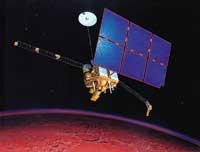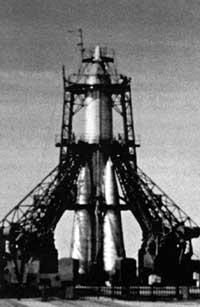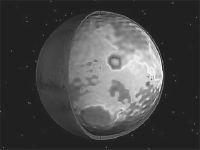Let's visit the messenger of the Gods!
2004/08/29 Galarraga Aiestaran, Ana - Elhuyar Zientzia
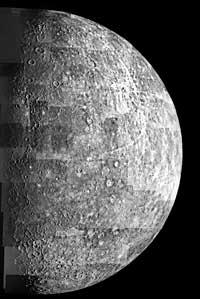
The Messenger probe went to Mercury three and a half weeks ago, specifically on day 3, so the new newspaper is obsolete. But if you look at the duration of the mission, the news remains very fresh. In fact, Messenger will not enter Mercury's orbit until 2011. Meanwhile, you will travel a long road full of incidents.
From Earth to Mercury there are 91 million km, but the probe will travel 7.9 billion km until it begins to turn around Mercury. The truth is that spacecraft do not go directly to their destinations, but use the gravity of the planets to save fuel.
Thus, Messenger will once exploit the gravity of the Earth, twice that of Venus and three times the very gravity of Mercury. Finally, with all these kilometers it enters the orbit of Mercury. However, you will not waste time, as on the way several data will be collected. However, it will concentrate most of the data in the year that will turn around Mercury. Astronomers then hope to answer many of their questions about Mercury.
How is Mercury?
That's what they want to know, what Mercury is like: what is the structure and nature of their heart, why it has just an atmosphere, what is in the ice poles, why its magnetic field is so strong, what is its geological history... These are the main questions NASA wants to solve.
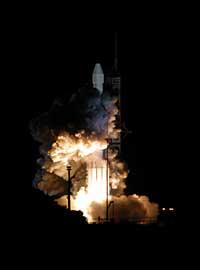
They know many other things, for example, that despite being the closest planet to the Sun, it is not the hottest planet in the Solar System. Yes, surprisingly, Venus has that honor, although it is somewhat further from the Sun. Mercury's atmosphere is very fine and the heat goes away, while the atmosphere of Venus produces the greenhouse effect, and therefore has such high temperatures. On the surface of Mercury the temperature reaches 450ºC and on Venus reaches 482 ºC.
Therefore, it does not have the highest temperature, but it does have the very high temperature. And at the same time, very low: In unsunny areas it is very cold and the temperature reaches -185ºC. This is also due to the lack of atmosphere; heat does not spread through the atmosphere of some areas to others on the planet.
In addition, the Mercury axis is not as inclined to the Sun as the Earth's, so the Sun cannot penetrate the depth of the surface craters of Mercury and it is very cold at the poles. Observations from the earth have observed ice at the poles. What is the frozen material? Is it icy water or something else like silica?
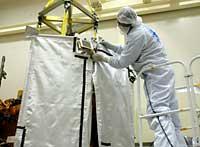
To confess the truth, there is no reason to think that the frozen is water, but a reflection of telescopes. So, unlike Mars, this time there has been no speculation about life. Not only because there is no water, but extreme temperatures do not make Mercury a very pleasant place. However, life is mainly limited by the lack of atmosphere: in the vacuum it is impossible to create and endure.
A planet full of contrasts
Mercury, at first glance, resembles the Moon: it is small, the second smallest planet in the solar system, behind Pluto. If the Earth is a basketball compared to the Earth, Mercury is a golf ball. Its bark is full of craters, as it has no atmosphere to curb the rocks and asteroids that cross the sky. The largest crater seen in photographs taken 30 years ago by the Mariner 10 spacecraft is 1,300 km in diameter. 1,300 km, go!
It doesn't really look like the Moon. The Moon is rocky and Mercury has a compact heart and a bare surface without rocks. One of the aspects to be clarified by Messenger is whether the skin was lost when colliding with something else, if it was by the influence of the Sun, or it was so, where it is now.
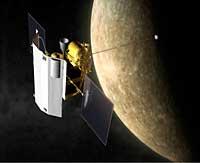
Other specific characteristics are, for example, orbit: The time it takes to turn the Sun is less than the Earth, 88 earth days. However, the day is very long than that of the Earth, one day of Mercury lasts 176 terrestrial days, that is, one day of Mercury lasts two years there.
The Good Messenger Traveller
However, Messenger does not go after specific things, but rather to reveal unknown things. For this, among other things, it has special cameras that collect stereo images of a single color and colors and complete the map of Mercury. For the study of the skin, spectrometers with gamma rays and neutrons are available, and for the study of surface materials it will use x-rays. Using a magnetometer, it maps the magnetic field and carries a laser altimeter for topography.
However, it will be difficult to explain everything about Mercury and European and Japanese space agencies have already announced their intention to go together to Mercury. In 2011-2012 they want to send two spacecraft to make a precise map and analyze the magnetosphere. Therefore, you will shortly receive and receive the flat visits you have left in peace for so many years.
Published in 7K.

Gai honi buruzko eduki gehiago
Elhuyarrek garatutako teknologia




